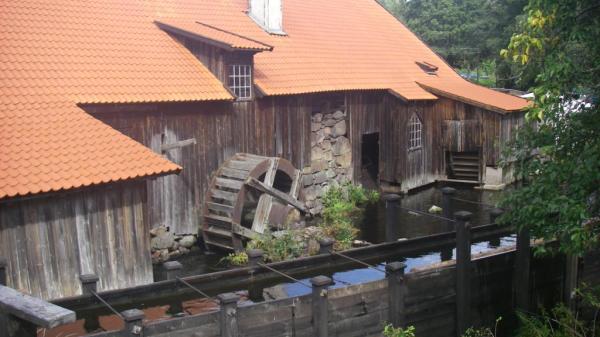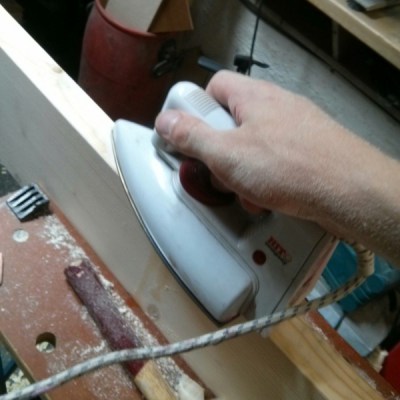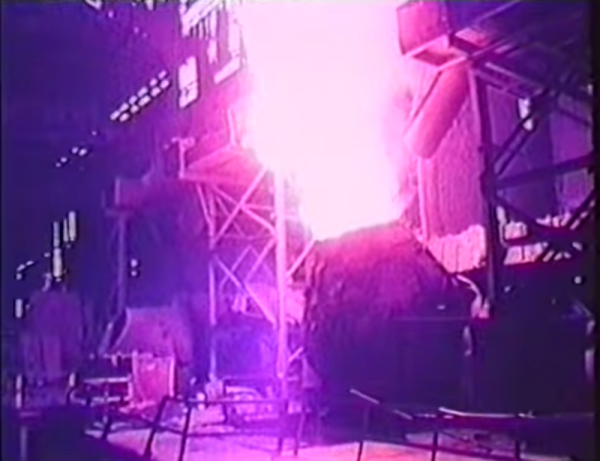Visit any renaissance fair across the United States this fall and you’ll undoubtedly find a blacksmith. He’ll be sweating away in a tent, pounding on a piece of glowing steel set against an anvil. While the practice of the single blacksmith endures today, high-production ‘works of days past required increasing amounts of muscle. The more tireless the muscle, the better. The manual efforts of the blacksmith were replaced by huge hammers, and the blacksmith needed only to turn the piece between impressions and maintain a healthy respect for the awesome crushing power of the machine.
Last week, blacksmith enthusiasts completed restoration work on the Häfla hammer in Finspang, Sweden. The 333 year old hydraulic hammer hadn’t been used since 1924, when operations ceased at the Häfla Hammerforge. The ‘works was built in 1682 and used the German method of forging, which had been introduced to Sweden in the 1500s. Steel production was revolutionized in the 1800s by the Bessemer process, which resulted in a much stronger product. Continue reading “Retrotechtacular: Häfla Hammerforge Healed”



 The Technique itself is dead simple and takes only a few minutes to perform. Simply apply a small amount of water, let it seep into the wood, and then bring a hot iron down onto the soaked wood to evaporate off the soaked water–instantly inflating the wood back into its original form!
The Technique itself is dead simple and takes only a few minutes to perform. Simply apply a small amount of water, let it seep into the wood, and then bring a hot iron down onto the soaked wood to evaporate off the soaked water–instantly inflating the wood back into its original form!
 More importantly, [Bessemer]’s process resulted in steel that was ten times stronger than that made with the crucible-steel method. Basically, oxygen is blown through molten iron to burn out the impurities. The silicon and manganese burn first, adding more heat on top of what the oxygen brings. As the temperature rises to 1600°C, the converter gently rocks back and forth. From its mouth come showers of sparks and a flame that burns with an “eye-searing intensity”. Once the blow stage is complete, the steel is poured into ingot molds. The average ingot weighs four tons, although the largest mold holds six tons. The ingots are kept warm until they are made into rail.
More importantly, [Bessemer]’s process resulted in steel that was ten times stronger than that made with the crucible-steel method. Basically, oxygen is blown through molten iron to burn out the impurities. The silicon and manganese burn first, adding more heat on top of what the oxygen brings. As the temperature rises to 1600°C, the converter gently rocks back and forth. From its mouth come showers of sparks and a flame that burns with an “eye-searing intensity”. Once the blow stage is complete, the steel is poured into ingot molds. The average ingot weighs four tons, although the largest mold holds six tons. The ingots are kept warm until they are made into rail.











